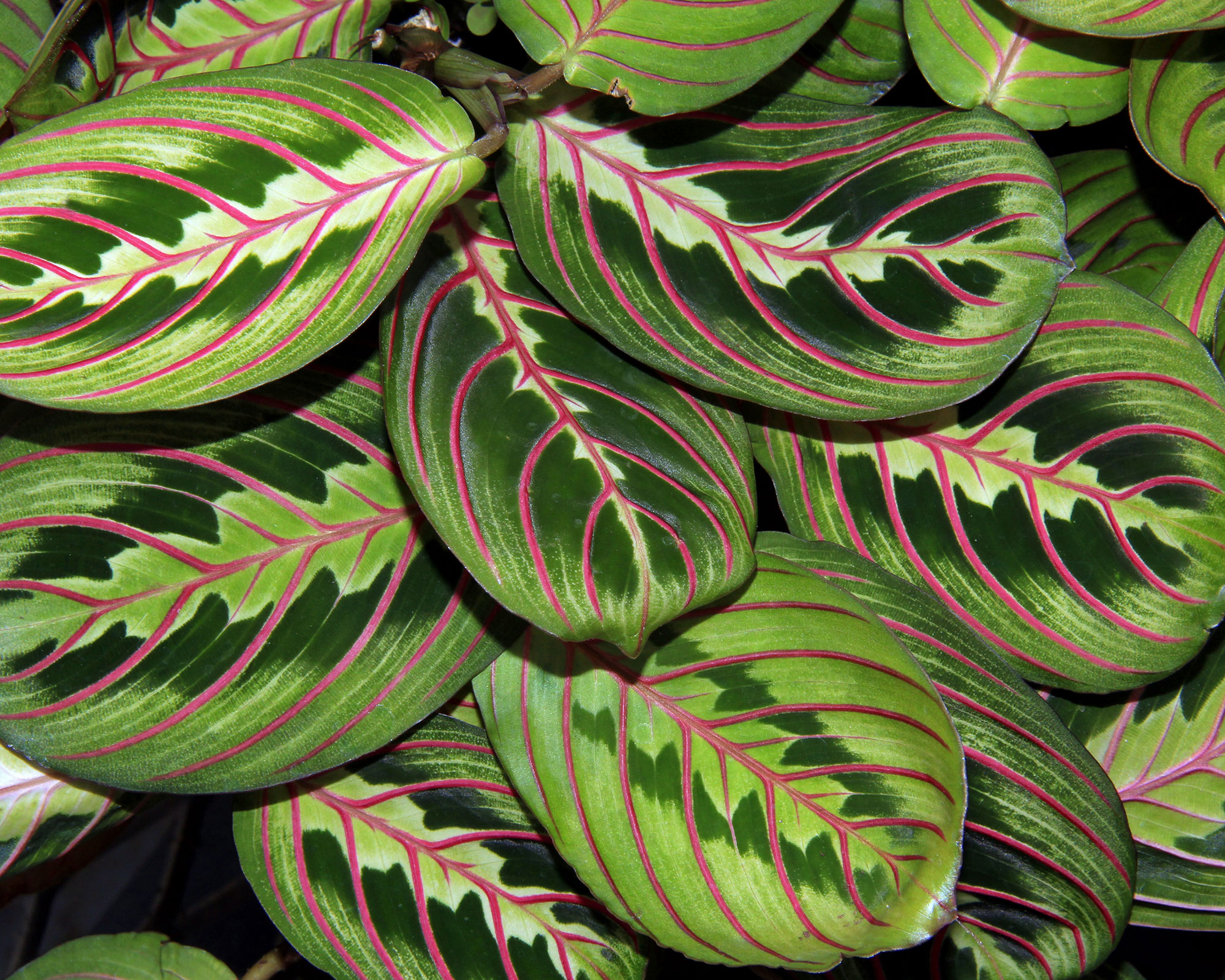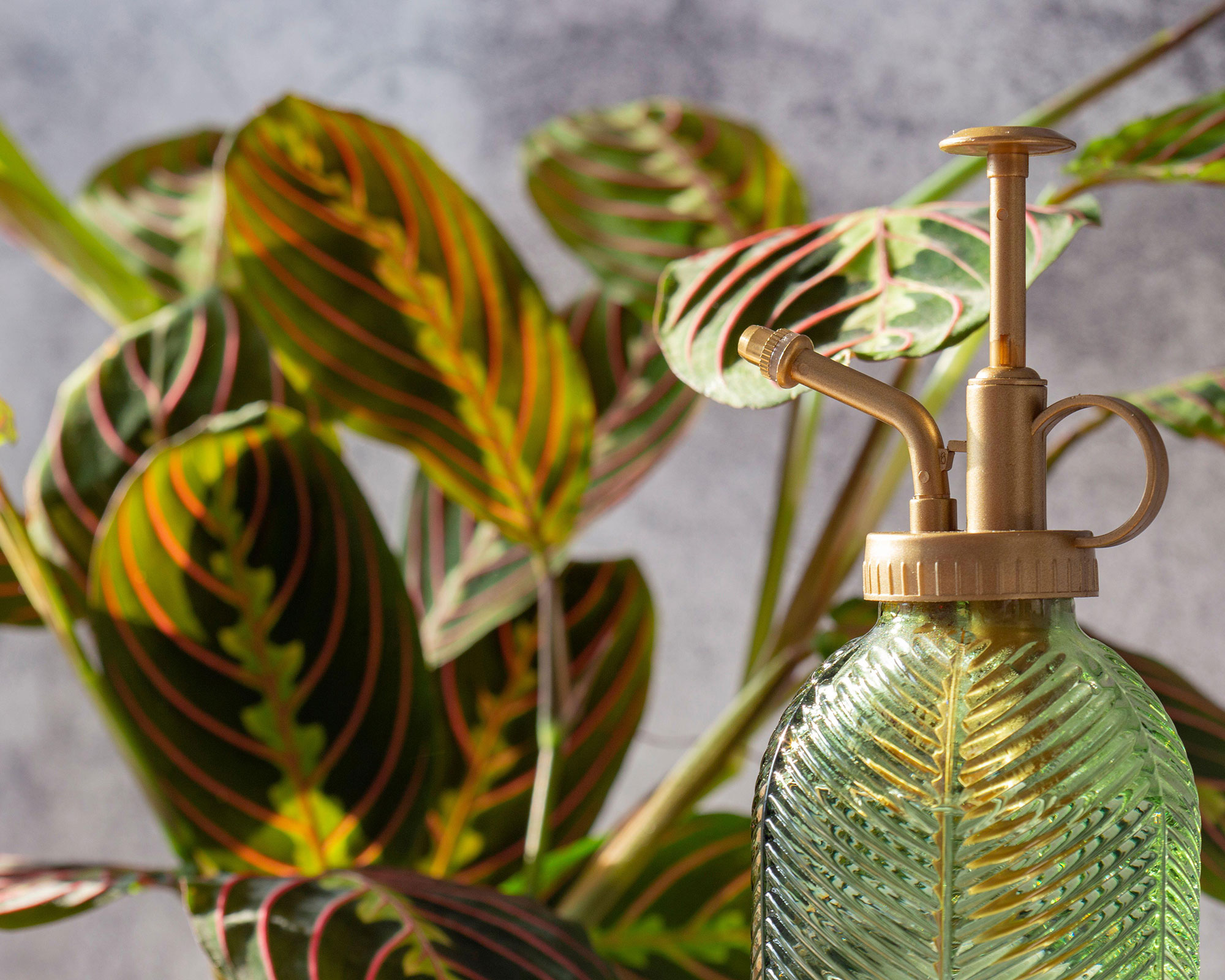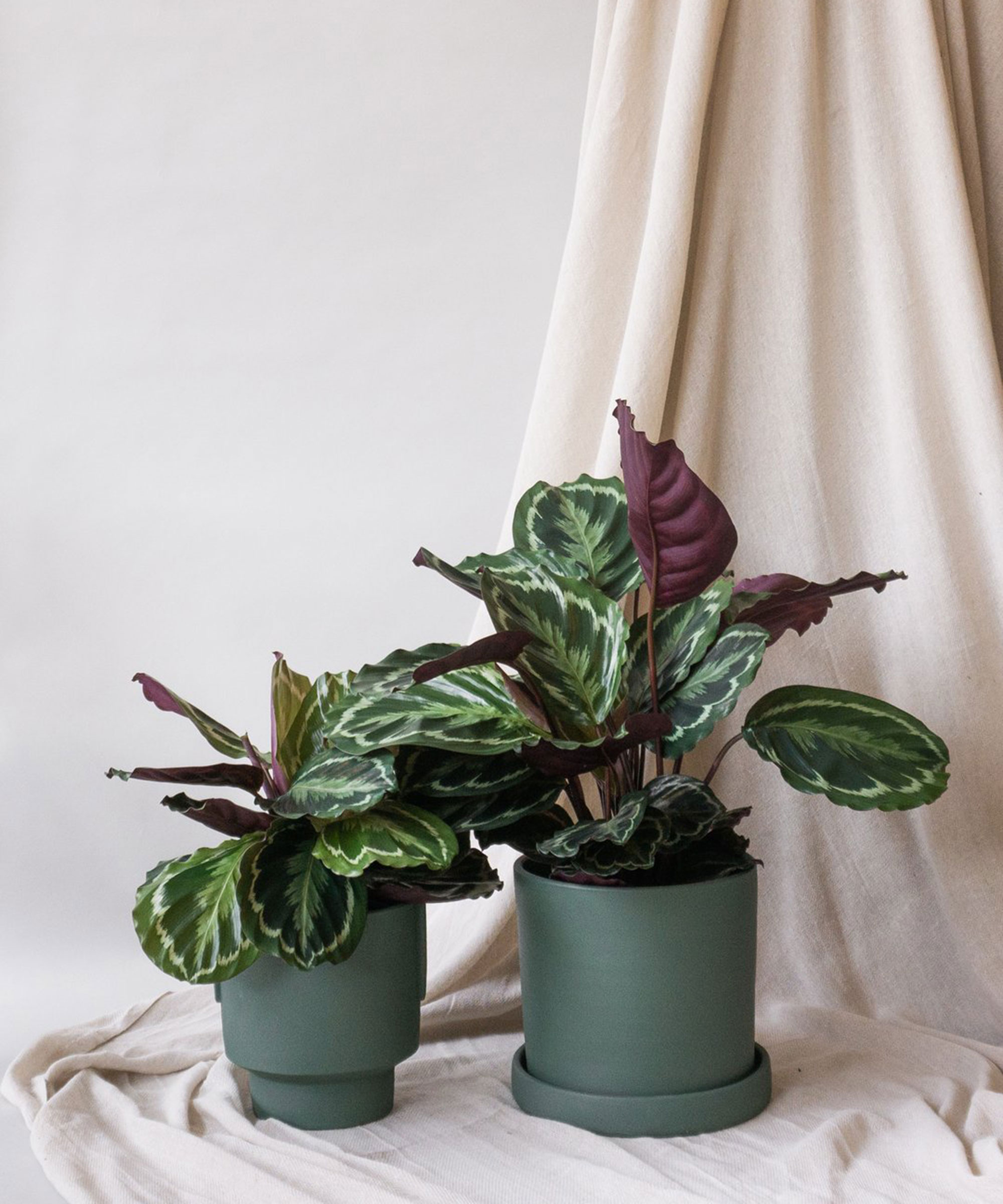Prayer plant care and growing tips: expert help and advice
The gorgeously colorful prayer plant is top of everyone's houseplant wish list. It's so easy to grow too!


You will probably recognise the prayer plant even if you don't already have one as they are literally everywhere. Plants with patterned leaves are a big trend at the moment and the prayer plant ticks all the boxes and some with its tri-colored patterned foliage that really makes a splash.
This gorgeously tropical-looking plant has deep green, velvety leaves etched with attractive pink detailing and a lime-colored scallop design running down the centre of each one.
Prayer plants get their name from the fact that the leaves are flat during the day, and fold upwards in the evening, rather like a hands clasped in prayer. While we’re on the subject of names, prayer plants are also known as Maranta leuconeura, which is their botanical name. They are not to be confused with calathea plants, which are a close relative.
They're one of the best indoor plants for purifying the air too so there are health benefits to adding a prayer plant to your indoor display. Find out how to nurture them now.

3 top tips for prayer plant care
From where to position one to how often to water plus lots more advice and other indoor plant ideas, we’ve rounded up all the expert tips you need on how to care for prayer plants so you can get the most from your beautiful new houseplant.
1. Choose the right spot
Aim for a greenhouse effect and you won’t go far wrong. The prayer plant does best in bright, indirect light. If exposed to full sun, the leaves can fade in color and develop brown blotches, so aim to place your plant in a north- or east-facing window if you can.
Somewhere warm and humid is the best place for a prayer plant. ‘Provided there is a window so the plant can access natural light, it's one of the best plants for bathrooms as your prayer plant will appreciate the steam and humidity generated by the shower,’ says Jo Lambell of houseplant specialists Beards & Daisies. ‘The prayer plant is also a great air purifier, so you could consider putting it in your bedroom to help you sleep at night. Aesthetically, it would look gorgeous on a bedside table, too.’
As they are so sensitive to dry climates, prayer plants can struggle during the colder winter months, particularly if placed in close proximity to heaters, so be sure to keep your prayer plant away from heat sources such as radiators.

2. They love humidity
The prayer plant is native to the tropics, so loves a humid atmosphere. If the air is dry, try placing it next to a humidifier or sitting the potted plant over a tray filled with water and pebbles to boost its moisture.
It also loves a good misting, especially during the winter months, so be sure to keep a mister handy for spritzing as and when. ‘Prayer plants require humidity in order to thrive so make sure you’re misting them regularly to achieve this,’ says Jo.
When it comes to indoor garden ideas, small prayer plants can start life in a terrarium too as they love the moist and temperate conditions.

3. Keep the compost moist
It’s really important that the soil of your prayer plant never dries out. ‘Water your prayer plant when the top two inches of soil feels dry to the touch,’ says Jo. Susceptible to drought, your plant won’t survive if you leave it unwatered.
When giving your prayer plant a drink, use lukewarm water and make sure to water the soil directly rather than pouring it over the leaves. Be mindful not to overwater either, as this can cause root rot and fungal problems. If your plant is given too much water, its leaves will begin to turn yellow and drop off.
Prayer plants are also fussy when it comes to the type of water used. Tap water can lead to browning at the leaf edges, so it's preferable to use filtered or distilled water. If you collect rainwater, you can also use this.
Allow the plant pot to drain well afterwards. In winter reduce the amount of watering but do not allow the compost to dry out entirely.

What’s special about prayer plants?
Prayer plants can fold their leaves upwards in the evening, as if they are praying. ‘This is called nyctinasty and it is thought this enables the moisture from the rainforest to access the roots more easily,’ explains Kate Turner, gardening guru at Miracle-Gro. ‘If you look carefully, you will even be able to see the leaves move at night too.’

Are prayer plants hard to care for?
Prayer plants are easy to look after if you keep them out of direct sunlight and regularly mist them. However, you should allow the soil to partially dry out between waterings. Giving your prayer plant a liquid feed during the growing season between April and September will also help them grow.
Prayer plants need some extra TLC to keep them in top condition. ‘They aren’t the lowest maintenance plants out there, but keep them away from direct sunlight, regulate their temperature, keep the soil moist and mist every few days and you should have a happy prayer plant,’ says Natalie Devereux of Serenata Flowers.
Find out how to care for aloe vera plants too as they look stunning arranged with prayer plants for a tropical indoor look.

How can I make my prayer plant grow faster?
Prayer plants are slow growing but can eventually reach up to a foot in height with the right encouragement.
Fertilizing plants is a good way to boost regular growth. Treat your prayer plant to a feed every two weeks from early spring through to fall with a diluted houseplant fertilizer to give it a boost.
If you don’t fertilize your prayer plant it won’t put on much growth but be careful not to overdo it as the leaves will start to go brown and the plant could die. In winter cut down the feeding to once a month.

Prayer plant watering tips
When it comes to watering plants, keep your eye on the compost and make sure it’s moist. It’s vital that the soil never dries out as prayer plants are susceptible to drought and could die if they become dehydrated.
Allow the plant pot to drain well after so your plant isn't left sitting in water.
In winter reduce the amount of watering but do not allow the compost to dry out entirely.

Where to buy a prayer plant
Now you know about prayer plant care, you probably want one of your own. They’re available in florists, garden centers and even grocery stores, but you can also shop for them online for a convenient option. Use our quicklinks to help you start your search.
Shop prayer plants in the UK:
- Shop prayer plants at Amazon
- Shop prayer plants at Beards & Daisies
- Shop prayer plants at Crocus
- Shop prayer plants at You Garden
Shop prayer plants in the US:


Lifestyle journalist Sarah Wilson has been writing about gardens since 2015. She's written for Gardeningetc.com, Livingetc, Homes & Gardens, Easy Gardens and Modern Gardens magazines. Having studied introductory garden and landscape design, she is currently putting the skills learned to good use in her own space where the dream is establishing a cutting garden.
